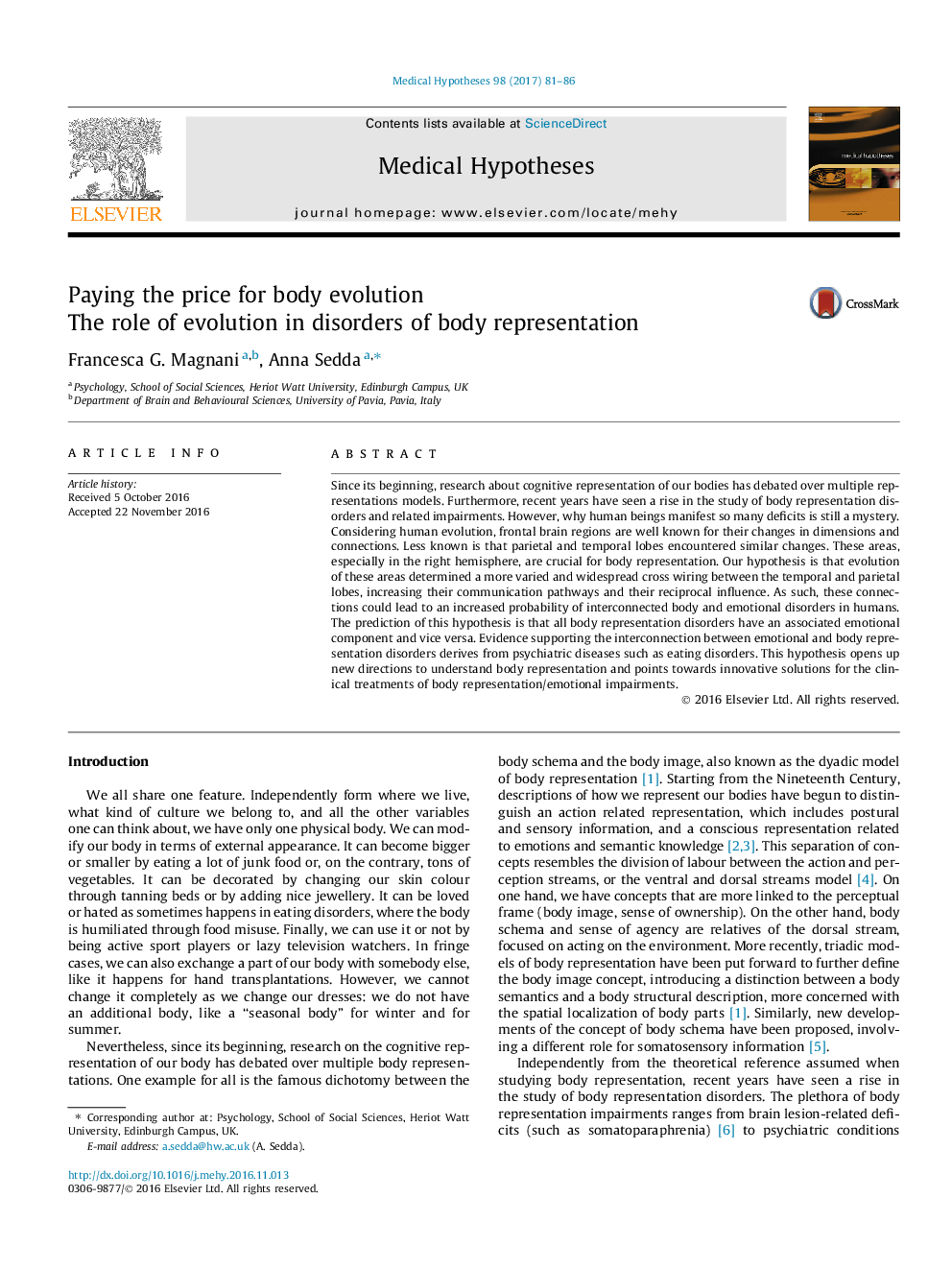| Article ID | Journal | Published Year | Pages | File Type |
|---|---|---|---|---|
| 5548607 | Medical Hypotheses | 2017 | 6 Pages |
Since its beginning, research about cognitive representation of our bodies has debated over multiple representations models. Furthermore, recent years have seen a rise in the study of body representation disorders and related impairments. However, why human beings manifest so many deficits is still a mystery. Considering human evolution, frontal brain regions are well known for their changes in dimensions and connections. Less known is that parietal and temporal lobes encountered similar changes. These areas, especially in the right hemisphere, are crucial for body representation. Our hypothesis is that evolution of these areas determined a more varied and widespread cross wiring between the temporal and parietal lobes, increasing their communication pathways and their reciprocal influence. As such, these connections could lead to an increased probability of interconnected body and emotional disorders in humans. The prediction of this hypothesis is that all body representation disorders have an associated emotional component and vice versa. Evidence supporting the interconnection between emotional and body representation disorders derives from psychiatric diseases such as eating disorders. This hypothesis opens up new directions to understand body representation and points towards innovative solutions for the clinical treatments of body representation/emotional impairments.
